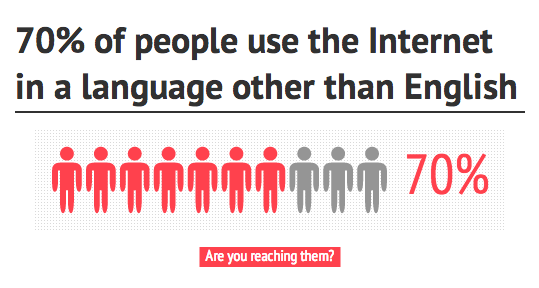Most people use some form of social media these days. We use it to stay in touch with our family and friends, to connect with businesses we’re interested in, to notify politicians when)we think they aren’t doing a great job, or to express our anger with a utility company when they don’t show up to fix the cable on the day they promised. Sometimes we don’t really expect an answer to our posts, but often we do. Deep down we hope that someone is actually listening!
If you’re a business owner, that someone is you.
The power of social media these days requires – nay, demands – that as a business owner you must pay attention to what people are saying about your business on social media, and then respond effectively. Yet, paradoxically, most businesses don’t take full advantage of social media’s huge potential impact on their brand. We’ve all heard the horror stories about company’s posts that went viral for all the wrong reasons. These marketing fails have been well publicized, and the negative impact to those companies and their brand reputation is powerful and painful.
However, the reverse can be true: the right strategy and a serious level of commitment to your social media presence can reap truly positive rewards for your brand, your business, and your bottom line. At LAT, we see the common mistakes businesses make on social media. Here are some of those mistakes – and how you can avoid them.
Common Mistake #1: Not Understanding How and Where Your Customers are Trying to Reach You
You know your customers are online so you set up a website, blog, and social media presence. That’s great, but are you taking into consideration the fact that only 30% of Internet users are English-speaking (yes, you read that right!). If you’re one of the many businesses that run an English-only strategy, 70% of all Internet users are not seeing your online presence. When China alone represents an online market with over 700M Internet users actively seeking opportunities to connect with brands they love, don’t you think it’s time to look past the English-speaking online world?

Full disclosure: I’m an Operations Manager, not a marketer. However as someone who cares about a company’s growth and effectiveness, it astonishes me how few companies develop their marketing strategy to include the significantly larger non-English segment of Internet users. The worst part? Reaching these non-English users is relatively straightforward. It requires knowledge of a) where the non-English online users are (hint: it’s not always Facebook or Twitter) and b) how to reach them (big hint: in their own language).
Solution #1: If You Build It, They Will Come
You’re already spending valuable time and money carefully crafting your marketing strategy. Integrating non-English markets into your plan only adds a few extra steps, but delivers compounded results. Ensure your strategy includes translating your website and social media content. Yes, you’re going to need to tailor your marketing message to suit each target language and culture just as you would for other demographics.
Sounds like “extra” work? Perhaps. But remember, most companies spend a lot of time and money planning an English-only marketing strategy that leaves 70% of the online market untapped. You want a full return on your marketing investment, and that means recognizing your entire potential market before your competition does.
Common Mistake #2: Poor Social Media Strategy (aka: Launch it and Forget It)
There are many ways a company can fail with their social media strategy. They can ignore the vast majority of their potential customer base by communicating in only one language (see: Common Mistake #1). They can launch a single social media channel, while ignoring their audience on other platforms. They can launch a social media channel (or two or three) then put minimal effort into engaging with those communities. Or they can sit on their hands and avoid social media altogether.
Social media channels are just like radio, television, and print ads were 30 years ago: a communication tool with a vibrant, dedicated user base. Just as it makes no sense for businesses to launch an empty print ad or a TV commercial with dead air, launching a social media channel and not feeding it with appropriate content is simply a waste of time and money. In fact, a poor online presence can damage your brand reputation more than not having a presence at all.
Solution #2: Listen, Respond, and Adjust
Plan your social media content carefully. Tailor it to suit each channel and update your page at a pace that matches each community’s expectations. The principals are the same ones you’d use for radio, TV, and print ads, but you’ll need one more tactic for your online strategy: responding directly to your digital audience.
Imagine you’ve just launched a massive TV ad campaign with a phone number prominently displayed to handle all those new product orders that will come flooding in. Now imagine you’ve got no one manning that customer service phone line. No business would make that mistake; however, launching a social media channel and pushing out your brand message without a detailed plan for how you will listen to, engage with, and actively respond to your followers in real time is the equivalent faux pas. Providing excellent customer service and pushing out your brand message are marketing tactics that blend together in real time on social media channels. You’ll be rewarded for regular, ongoing commitment to your online social communities.
Common Mistake #3: Trying to Do it All Yourself
Many businesses try to keep everything in house when planning a launch of a website or social media channel for the first time. While it’s understandable to want to be in control of these projects, if your business doesn’t specialize in the nuances of these platforms then the results can be disastrous. Whether or not it’s multilingual, developing a new website or launching a new social media presence requires specific knowledge and skill sets that range from technical know-how to creative prowess.
When these online platforms are multilingual, many companies are guilty of turning to an internal team member who happens to speak a particular language and using them as a linguistic expert. Of course, if you have access to a native speaker of a foreign language it’s great to use their unique knowledge to strengthen your business, but simply being a native speaker does not necessarily equal an expert in the kinds of language services multilingual websites and social media require. There is a vast difference between the skills of a native speaker and a professional translator when it comes to adapting content between languages. Similarly, if you’re looking for someone to do social media marketing in a particular language, you need someone who not only simply speaks the language, but also understands the nuances of the particular platform you want to use. If you have this person on your team, great – use them! If not, don’t saddle them with a heavier workload and unreasonable expectations.
Solution #3: It’s Okay to Ask for Help
You’re not a web development or digital/social media marketing company? Seek out companies that are. Working with professionals who clearly understand your needs and how to solve your problems will ensure your transition onto new digital platforms is as seamless and painless as possible. You’ll be spending money on these new platforms, so use that budget effectively. Invest in companies that truly know your audience. When it comes to digital marketing, you want a company that understands your target audience and how to properly craft an online marketing strategy. If you’re taking the extra step and making that strategy multilingual (remember Common Mistake #1?), then take the extra step with your collaborations to ensure you work with a company that has a proven track record with language services.
What Have We Learned?
Remember: online communities require fresh, resonant content from your brand and constant monitoring and engagement. If you’re particularly smart, you’ll be pushing out your brand’s content in several languages on multiple platforms to reach as much of your potential market as possible. If you don’t have the knowledge and skills in-house, don’t be shy to ask for help from a company that specializes in reaching these communities through cultural marketing.
Avoiding the common mistakes above will help your business realize the valuable returns of this larger market share and the growth it will bring to your business…before your competitors do.




